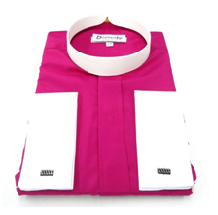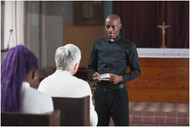A New Perspective on Clergy Wear and Its Community Connection
Mar 11th 2022
Priestly and deacon attire has rigorously adhered to prescribed regulations that were established to offer consistency to those who are loyal to the Church. A priest or a vicar could clearly be distinguished from other people by the apparel that they wore, most notably by the collar that graced their necks.
With time, these constraints have been more flexible, and priests now need a more casual choice of clergy wear to fulfill their responsibilities as modern-day spiritual leaders. A balance between modern fashion and traditional history, however, must be achieved for priests to maintain the traditional statement of affiliation to the Church.
The Shift of How We View the Clergy Wear
Clothes worn solely by members of the clergy are classified as clerical wear since they are not required to be worn during liturgical celebrations. To the extent that it differs from vestments, it is not reserved primarily for use during services but rather serves as a symbol of their dedication to the church.
It is a means for clergy to constantly tell themselves and others of respective responsibilities and their spiritual connection to Him when they are dressed in priest clothing. It is as if a man of the Church has brought a live testimony of God into the room when he meets with someone. The psychological and social effect on people who have met with him is significant.
Despite this, many priests have started to deviate from traditional clerical attire, with some even refusing to don the ecclesiastical collar entirely. For members of their church as well as members of the general public, the collar alone would be sufficient to make them immediately and rapidly recognized.
This kind of collar was initially used in the nineteenth century by clergymen. It used to be made of cotton or white linen and done up around the neck, just above clothing, to keep it from becoming dirty. In modern times, collars are often constructed of plastic, and they may be replaced with a partial collar worn beneath the garment or cassock collar.
Priestly attire has changed in tandem with the contemporary age, taking on features of current dress designs as they have become more prevalent. A staple of clergymen's daily wear, clergy apparel provides both formalities while conducting services and comfortability when doing regular chores. Although they are used for a variety of purposes, these garments retain their position as customary garments in the context of the church, despite their twofold nature.
Because of the increased demand, there are a plethora of colors, designs, patterns, and materials to choose from. While black continues to be the most common color for clergy, the introduction of a broader variety of colors and styles has broadened the range of options available to them and enabled their personal preferences to be embraced as a part of a job function.
Clergy Wear Strengthens Community Connections
This confirmation comes from educated folks who have a great deal of respect for the important role that priests play in our society as a result of their own personal experiences. In fact, for men and women of the cloth, wearing clericals, or casual clergy wear is the most effective method to maintain their modesty.
Historically, they have been around for hundreds of years and are based on the garments worn by ordinary people throughout the Middle Ages. In a sense, secular fashion, which changes constantly to reflect how affluent our culture has evolved, has displaced clerical clothing, which has kept essentially unaltered.
To be clear, this does not imply that every priest or pastor should always be clad in the traditional cassock. A significant improvement has been made possible by the use of modern materials and greater workmanship. In today's world, for example, high-quality fabrics which are both resilient and comfortable to wear are used to construct Imperial robes. In addition, we may observe many ordained persons dressed in banded collar clerical shirts that are both utilitarian and stylish.
As previously said, the clerical dress is sacred in the idea that it distinguishes the ordained and makes them immediately identifiable.  Because of this, they have a greater number of chances to help the community and share about their purpose on earth, even with those who are not members of their church. It also instills trust in those who approach a priest outside of service for more confidential discussions.
Because of this, they have a greater number of chances to help the community and share about their purpose on earth, even with those who are not members of their church. It also instills trust in those who approach a priest outside of service for more confidential discussions.
We at Divinity Clergy Wear offer clergy shirts in end-on-end, a perspiration-wicking fabric comprised of two finest cotton, poly blend, or mixed threads that is both lightweight and durable. A wide variety of hues are available, including white, blue, and grey, a two-tone banded collar clergy shirt in roman purple, black, and more. All of which include high-quality materials, stylish designs, plush comfort, and thoughtful details like concealed buttons and pockets.
You may call us at 977-453-3535 if you're looking for clergy clothing of the highest caliber for any event. Whether you're in or out of the church, you can count on us to dress you appropriately for your sacramental duties.
